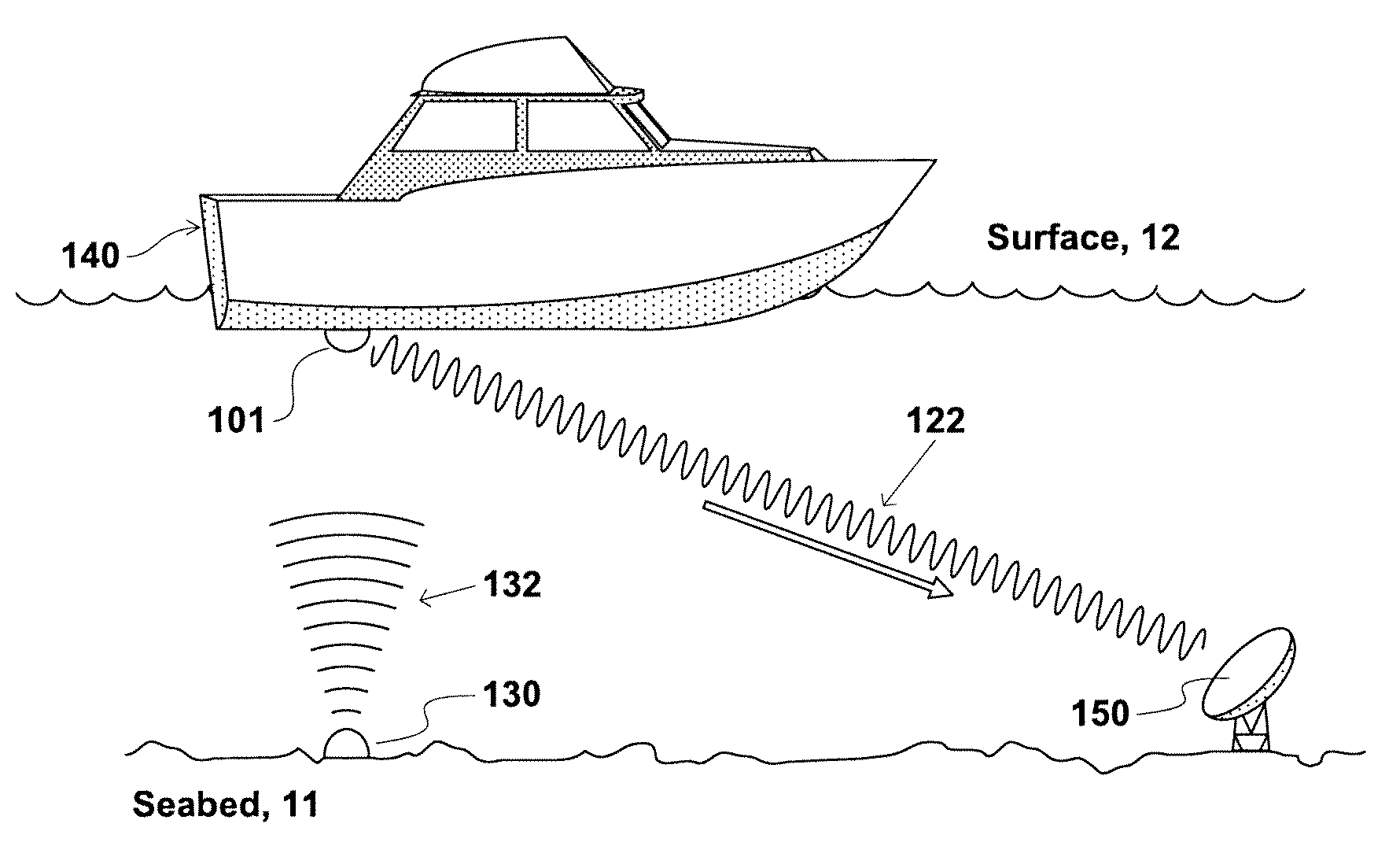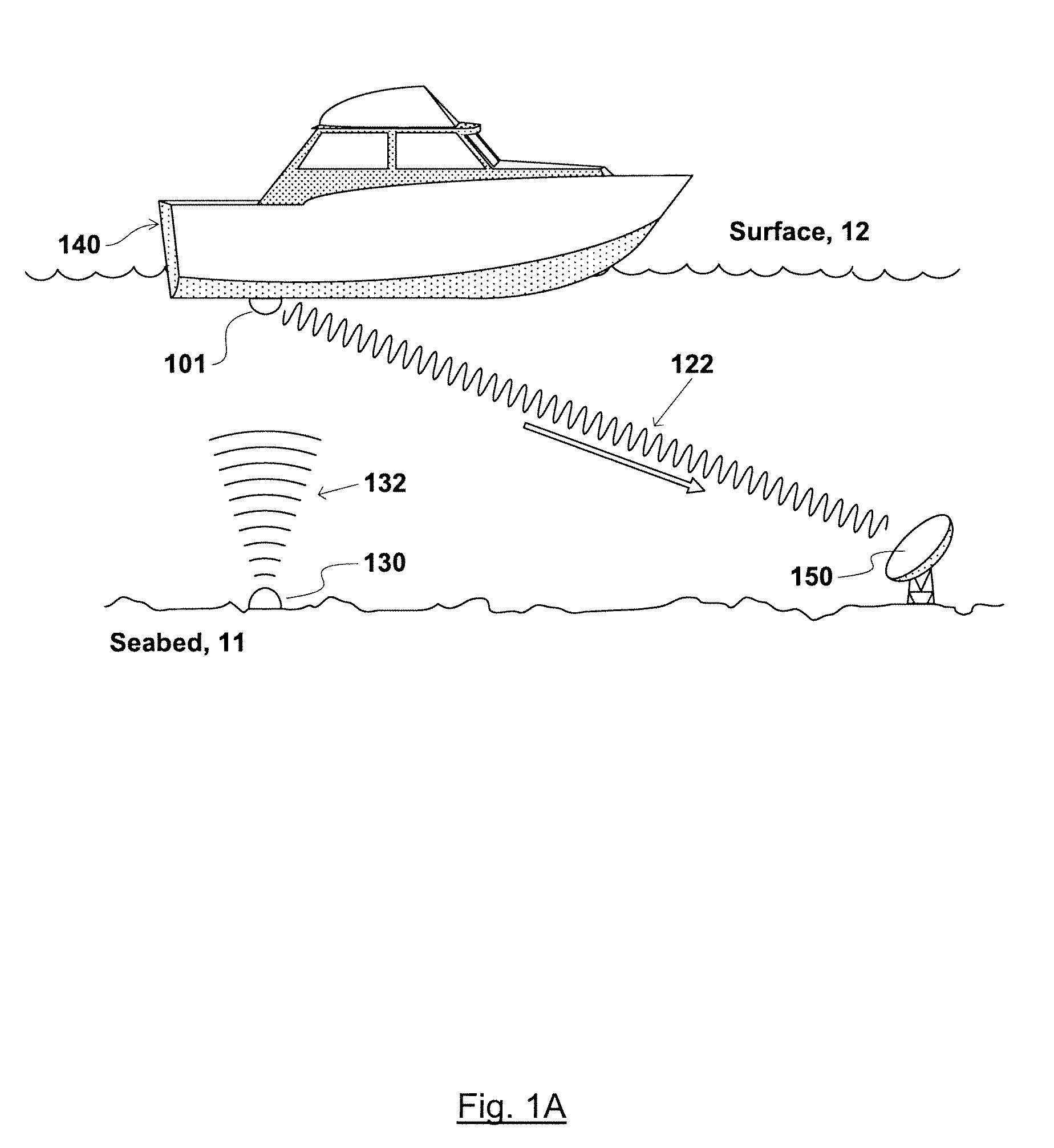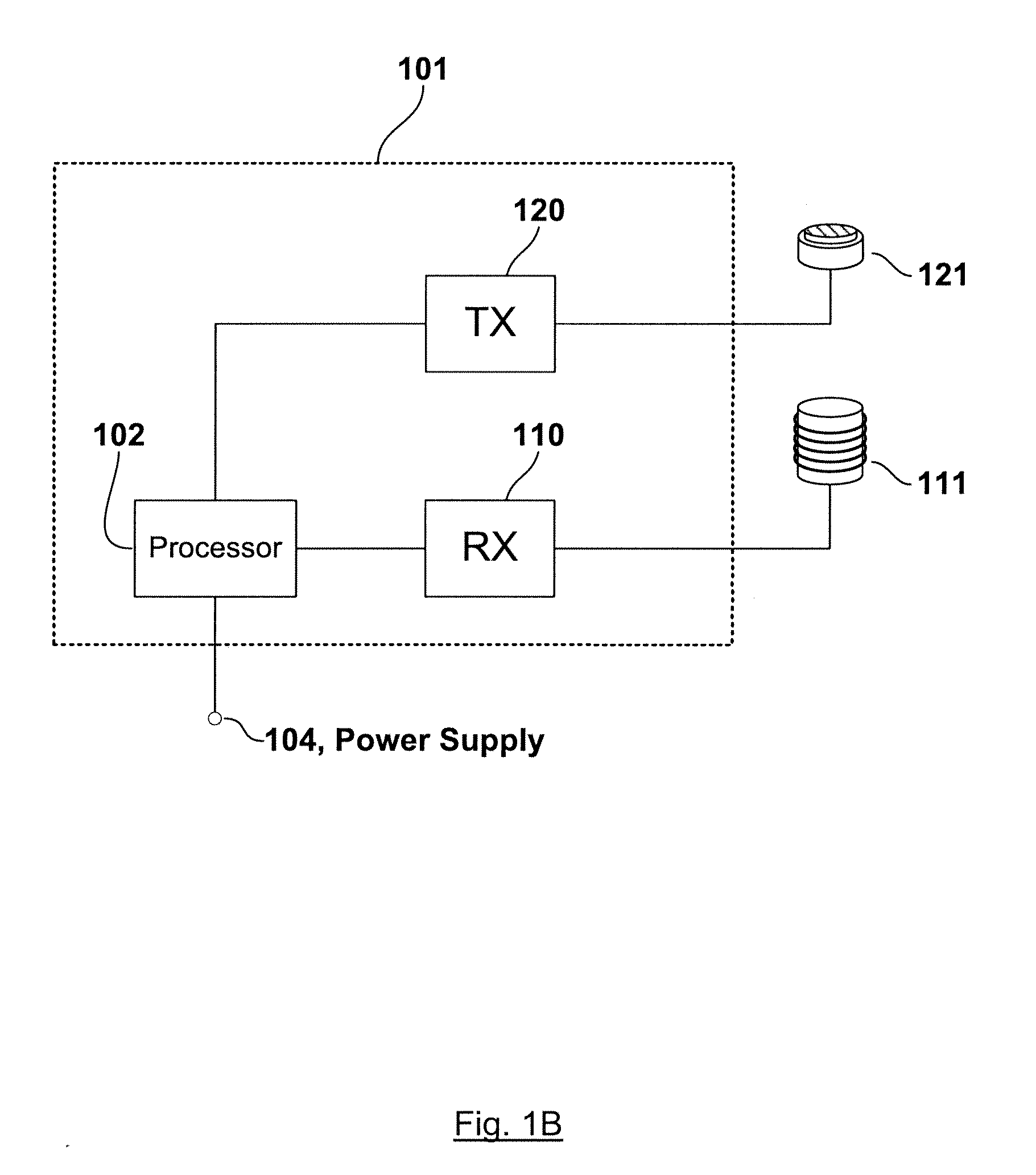Sea vessel tagging apparatus and system
a technology for tagging apparatus and sea vessels, applied in the direction of sound producing devices, using reradiation, transmission, etc., can solve the problems of rfid tags, electromagnetic signals are transmitted, and the crew cannot be seen by the vessel, so as to prolong the active deployment
- Summary
- Abstract
- Description
- Claims
- Application Information
AI Technical Summary
Benefits of technology
Problems solved by technology
Method used
Image
Examples
Embodiment Construction
[0029]According to a first aspect, the present invention provides a tagging and identification device for tracking and monitoring sea vessels.
[0030]The tagging and identification device of the present invention comprises a receiver for receiving an electromagnetic trigger signal, and an acoustic transmitter for transmitting an acoustic identification signal. The tagging and identification device is triggered by the reception of a low frequency radio signal, which is transmitted by an underwater beacon.
[0031]On reception of the electromagnetic trigger signal, the tagging and identification device of the present invention transmits an acoustic identification signal. The acoustic identification signal is received by a remotely located acoustic receiver.
[0032]The tagging and identification device of the present invention may be attached to the hull of a sea vessel. Furthermore, the tagging and identification device of the present invention may be attached to a portion of the sea vessel ...
PUM
 Login to View More
Login to View More Abstract
Description
Claims
Application Information
 Login to View More
Login to View More - R&D
- Intellectual Property
- Life Sciences
- Materials
- Tech Scout
- Unparalleled Data Quality
- Higher Quality Content
- 60% Fewer Hallucinations
Browse by: Latest US Patents, China's latest patents, Technical Efficacy Thesaurus, Application Domain, Technology Topic, Popular Technical Reports.
© 2025 PatSnap. All rights reserved.Legal|Privacy policy|Modern Slavery Act Transparency Statement|Sitemap|About US| Contact US: help@patsnap.com



